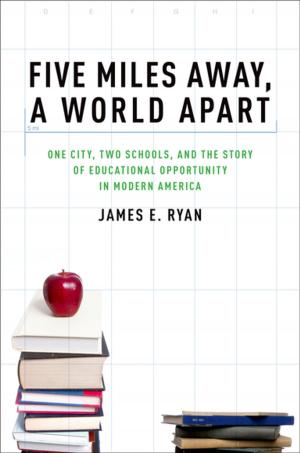Betrayals
Fort William Henry and the "Massacre"
Nonfiction, Social & Cultural Studies, Social Science, Cultural Studies, Native American Studies, History, Americas, United States, Colonial Period (1600-1775), Native American| Author: | Ian K. Steele | ISBN: | 9780190281632 |
| Publisher: | Oxford University Press | Publication: | July 26, 1990 |
| Imprint: | Oxford University Press | Language: | English |
| Author: | Ian K. Steele |
| ISBN: | 9780190281632 |
| Publisher: | Oxford University Press |
| Publication: | July 26, 1990 |
| Imprint: | Oxford University Press |
| Language: | English |
On the morning of August 9, 1757, British and colonial officers defending the besieged Fort William Henry surrendered to French forces, accepting the generous "parole of honor" offered by General Montcalm. As the column of British and colonials marched with their families and servants to Fort Edward some miles south, they were set upon by the Indian allies of the French. The resulting "massacre," thought to be one of the bloodiest days of the French and Indian War, became forever ingrained in American myth by James Fenimore Cooper's classic novel The Last of the Mohicans. In Betrayals, historian Ian K. Steele gives us the true story behind Cooper's famous book, bringing to life men such as British commander of Fort William Henry George Monro, English General Webb, his French counterpart Montcalm, and the wild frontier world of Natty Bumppo. The Battle of Lake George and the building of the fort marked the return of European military involvement in intercolonial wars, producing an explosive mixture of the contending martial values of Indians, colonials, and European regulars. The Americans and British who were attacked after surrendering, as well as French officers and their Indian allies (the latter enraged by the small amount of English booty allowed them by the French), all felt deeply betrayed. Contemporary accounts of the victims--whose identities Steele has carefully reconstructed from newly discovered sources--helped to create a powerful, racist American folk memory that still resonates today. Survivors included men and women who were adopted into Indian tribes, sold to Canadians in a well-established white servant trade, or jailed in Canada or France as prisoners of war. Explaining the motives for the most notorious massacre of the colonial period, Steele offers a gripping tale of a fledgling America, one which places the tragic events of the Seven Years' War in a fresh historical context. Anyone interested in the fact behind the fiction will find it fascinating reading.
On the morning of August 9, 1757, British and colonial officers defending the besieged Fort William Henry surrendered to French forces, accepting the generous "parole of honor" offered by General Montcalm. As the column of British and colonials marched with their families and servants to Fort Edward some miles south, they were set upon by the Indian allies of the French. The resulting "massacre," thought to be one of the bloodiest days of the French and Indian War, became forever ingrained in American myth by James Fenimore Cooper's classic novel The Last of the Mohicans. In Betrayals, historian Ian K. Steele gives us the true story behind Cooper's famous book, bringing to life men such as British commander of Fort William Henry George Monro, English General Webb, his French counterpart Montcalm, and the wild frontier world of Natty Bumppo. The Battle of Lake George and the building of the fort marked the return of European military involvement in intercolonial wars, producing an explosive mixture of the contending martial values of Indians, colonials, and European regulars. The Americans and British who were attacked after surrendering, as well as French officers and their Indian allies (the latter enraged by the small amount of English booty allowed them by the French), all felt deeply betrayed. Contemporary accounts of the victims--whose identities Steele has carefully reconstructed from newly discovered sources--helped to create a powerful, racist American folk memory that still resonates today. Survivors included men and women who were adopted into Indian tribes, sold to Canadians in a well-established white servant trade, or jailed in Canada or France as prisoners of war. Explaining the motives for the most notorious massacre of the colonial period, Steele offers a gripping tale of a fledgling America, one which places the tragic events of the Seven Years' War in a fresh historical context. Anyone interested in the fact behind the fiction will find it fascinating reading.















